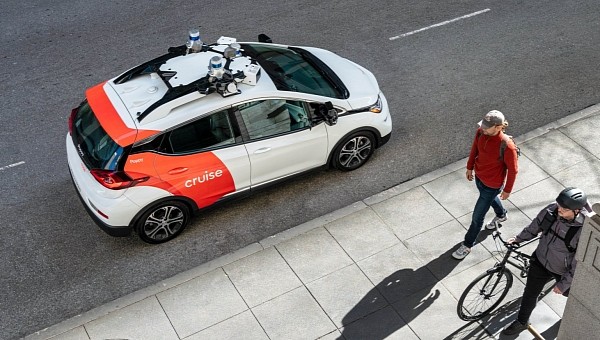One year ago, Cruise launched the first self-driving taxi service in San Francisco, although it would take longer to reach commercial service status. Over 400,000 miles later, Cruise’s autonomous riding service is expanding to include almost all of San Francisco.
Cruise’s CEO, Kyle Vogt, made the announcement in a Twitter post on Wednesday. Vogt explained that the driverless taxi service now includes the Mission, Marina, the Presidio, and much of the western and southern areas of the city. Two significant areas are still not covered: Twin Peaks, which is mostly open space with many closed roads, and the Financial District, which Vogt named as the “SF’s busiest neighborhood.”
The expanded service zone is now available to Cruise employees only, with a wider rollout planned “in a few weeks.” This does not mean that Cruise will now operate freely in San Francisco. The service is still available to select customers who signed up on a public waitlist, and Cruise autonomous vehicles still work during limited time intervals.
Cruise expansion comes at a time when the company is under scrutiny, both from the local authorities and the NHTSA. According to San Francisco Standard, city transit officials have criticized the company’s activities, highlighting many safety hazards and traffic problems caused by its autonomous vehicles. These culminated on June 3rd with a crash that led to a software recall on all 80 cars in Cruise’s fleet.
Most of the problems are related to Cruise vehicles blocking lanes and causing traffic jams on the city’s busiest roads. Some scenes have become viral on social media, prompting city officials to claim that Cruise vehicles “could quickly exhaust emergency response resources and could undermine public confidence in all automated driving technology.”
Despite the setbacks, Cruise parent company General Motors wants to deploy the Cruise Origin capsule next year. Unlike current Chevrolet Bolt vehicles, Cruise Origin would not have a steering wheel, although early testing prototypes would still have a human driver supervising the operation.
The expanded service zone is now available to Cruise employees only, with a wider rollout planned “in a few weeks.” This does not mean that Cruise will now operate freely in San Francisco. The service is still available to select customers who signed up on a public waitlist, and Cruise autonomous vehicles still work during limited time intervals.
Cruise expansion comes at a time when the company is under scrutiny, both from the local authorities and the NHTSA. According to San Francisco Standard, city transit officials have criticized the company’s activities, highlighting many safety hazards and traffic problems caused by its autonomous vehicles. These culminated on June 3rd with a crash that led to a software recall on all 80 cars in Cruise’s fleet.
Most of the problems are related to Cruise vehicles blocking lanes and causing traffic jams on the city’s busiest roads. Some scenes have become viral on social media, prompting city officials to claim that Cruise vehicles “could quickly exhaust emergency response resources and could undermine public confidence in all automated driving technology.”
Despite the setbacks, Cruise parent company General Motors wants to deploy the Cruise Origin capsule next year. Unlike current Chevrolet Bolt vehicles, Cruise Origin would not have a steering wheel, although early testing prototypes would still have a human driver supervising the operation.
Tonight our driverless service area in SF expands to cover almost all of SF. Today is also exactly one year since my first ride, the first driverless ride in a major US city. pic.twitter.com/82PnXXRd5t
— Kyle Vogt (@kvogt) November 1, 2022












